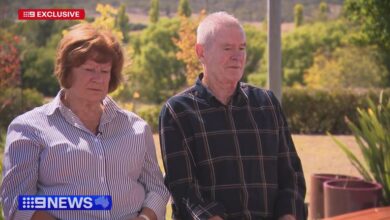AG questions advice
Victoria’s nurse-on-call hotline needs reviewing, says Auditor-General.
It has taken pressure off the state’s public hospital emergency departments, but the safety of the advice given by Victoria’s nurse-on-call hotline has come under question following an Auditor-General’s report.
While finding that overall the service was safe, the report – written by Des Pearson and tabled in Parliament on September 15 – found 4 per cent of 800 mystery callers testing the service were given unsafe advice.
The most common reason for assessing the calls as unsafe was the nurse’s failure to pick up on cues given by the caller, such as the length of pain or dry mouth indicating dehydration.
The callers should have been told to attend the ED immediately, but were instead told to see a doctor in four hours. The nurses involved have since had coaching on picking up cues, and the results of mystery callers has improved from 5 per cent being deemed unsafe in 2008-2009 down to 2 per cent.
Reported risk incidents were “extremely low” at 105 out of 1.47 million calls – no reported deaths – however, Pearson said this didn’t correctly reflect clinical safety as some incidents go undetected.
Established in June 2006, the 24-hour, seven-day a week telephone service, using registered nurses to offer health and medical advice, handles more than 350,000 calls annually and has saved an estimated $4.6 million in health service resources each year.
The equivalent of the service is provided in all states – except Victoria and Queensland – as part of the national approach, Health Direct. In Victoria, the department of health has contracted its delivery to the same provider of the national service.
With the contract expiring in March 2011, Pearson said the department should “rigorously evaluate the service provider’s performance” to address the issues raised in the report and decide whether it should remain separate from the national system.
Timeliness of the service was another area that needs improvement, the report said. In 30 of the 52 months reviewed, the service did not meet the required target of answering 80 per cent of calls within 20 seconds.
The average time for callers to speak to a registered nurse in 2009-10 was 33 seconds – a vast improvement from 2008-09 when callers waited almost two minutes to speak to a nurse.
Who answered the calls also needed to be looked at. With up to 40 per cent of calls currently being answered in other states by staff employed by the provider of the national service, and with no apparent quality issues, the rationale for continuing it as a stand alone service was unclear, said Pearson.
“In its planning for the next contract DH should undertake a comparative cost-benefit analysis of continuing with a Victorian specific service or joining the national system,” the report said.
The total number of patients diverted from emergency services indicates the service prevented at least 1761 ambulance calls and 15752 emergency department presentations in 2008-2009.
However, the Australasian College for Emergency Medicine says the service hasn’t reduced demand for EDs, which were “busier than ever”.
Dr Simon Judkins, Victorian chairman of the college, told the Age that people who used the service were not those who spent long hours in emergency departments.
“All over the state, emergency departments, wards and aged-care facilities do not have enough staff to keep all of their beds open,” he told the Age.
“Redeploying these nurses to open these beds will have more impact on overcrowding than an advice line ever would.”
While accepting many of its recommendations, the department of health said the report didn’t give enough weight to the measures in place to ensure quality.
“The report places too much emphasis on mystery shopping results in assessing the quality and safety of the service,” Fran Thorn, the departments secretary, said in a written response.
Email: [email protected]





